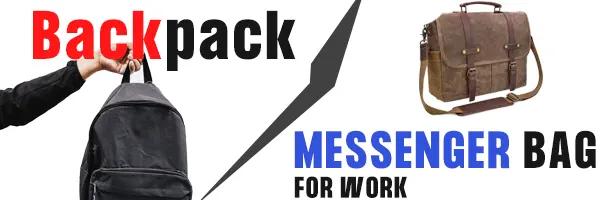Planning a trip to Philmont Scout Ranch can be an exciting yet challenging task, especially when it comes to packing for the rugged terrain and unpredictable weather conditions. I remember my first Philmont trek like it was yesterday—I was so eager to hit the trail that I didn’t put much thought into my gear.
Big mistake. Halfway through the trip, I found myself struggling with a backpack that was too heavy, boots that weren’t properly broken in, and a rain jacket that barely held up during a sudden downpour. It was a humbling experience, but it taught me invaluable lessons about preparation and packing smart.
Philmont’s elevation ranges from 6,500 to over 12,000 feet, which means the weather can change in an instant. During my trek in the summer, I experienced warm, sunny days that quickly turned into chilly, rainy evenings.
One night, the temperature dropped into the 30s, and I was grateful I’d packed a reliable sleeping bag and layers. But I also learned the hard way that not all gear is created equal—my cheap, lightweight rain jacket soaked through within minutes, leaving me shivering and frustrated. After that, I invested in quality gear, and it made all the difference on my next trip.
If you’re planning a spring or summer trek, be prepared for daytime temperatures ranging from 60 to 80°F and nighttime lows between 30 and 50°F. Rain is common, so durable raingear is a must. And if you’re considering a winter adventure (December through March), you’ll need to pack even more strategically to handle snow and freezing temperatures.
In this guide, I’ll share recommendations on what to pack for a Philmont trip, based on my own experiences and the lessons I’ve learned along the way. From clothing and gear to personal items and optional extras, these tips will help you be fully prepared for whatever Philmont throws at you. Trust me, a little preparation goes a long way in making your high adventure camp in northern New Mexico not just memorable, but truly enjoyable.
Also Read: Best Backpack For Philmont 2025[Latest & Comfortable]
Some Most Essential Things To Pack For Any Type of Philmont Adventure Trip
Table of Contents
When preparing for a trip to Philmont, it’s important to carefully consider the weather and terrain of the area to ensure you pack the appropriate clothing and gear. I’ve learned this the hard way—my first Philmont trek was a mix of unforgettable memories and a few avoidable mistakes.
From blisters caused by poorly broken-in boots to shivering through cold nights because I underestimated the temperature drops, I’ve faced my fair share of challenges. But each trip taught me valuable lessons about what works and what doesn’t. Here’s a breakdown of the essentials, based on my experiences, to help you stay comfortable and safe on your high adventure camp:
1. Keep The Right Kind of Hiking Shoes or Boots:
Choosing the right footwear is non-negotiable. On my first trek, I made the mistake of wearing brand-new boots straight out of the box. By the second day, I had blisters the size of quarters, and every step felt like torture. Since then, I’ve learned to break in my boots at least a month before the trip. I also carry a small blister kit with moleskin and tape, just in case. Trust me, your feet will thank you.
Pro Tip: Opt for sturdy hiking boots with ankle support, and make sure they’re waterproof. Philmont’s terrain is rugged, and wet feet can ruin your trip.
2. Socks: Your Feet’s Best Friend
I can’t stress enough how important good socks are. On one trek, I only packed two pairs of socks, thinking I could rinse and reuse them. Big mistake. By day three, my socks were damp, and my feet were a mess. Now, I always carry at least three pairs of high-quality, moisture-wicking socks.
Why Multiple Pairs Are Mandatory: Moisture is the enemy on the trail. Wet socks lead to blisters and discomfort. Rotating your socks ensures your feet stay dry and happy.
3. Pants: Lightweight and Versatile
I used to pack heavy jeans for my trips, thinking they’d be durable. But they were hot, slow to dry, and took up too much space. Now, I swear by lightweight, quick-drying pants. On one trip, I even brought convertible pants that turned into shorts—perfect for those warm afternoons and chilly evenings.
Pro Tip: Pack at least one pair of breathable, active pants. If you’re tight on space, convertible pants are a game-changer.
4. Shirts: Sun & Bug Protection
I’ve learned the hard way that cotton shirts are a no-go. They soak up sweat and take forever to dry. On one particularly buggy trek, I regretted not packing long-sleeved shirts. Now, I always bring lightweight, moisture-wicking shirts—one for daytime and one for nighttime.
Pro Tip: Long-sleeved shirts are great for sun and bug protection. Look for materials like polyester or merino wool.
5. Jacket or fleece: Be Prepared for the Cold
Philmont’s nights can get surprisingly cold, even in summer. On my first trip, I underestimated the temperature drop and spent a night shivering in my thin jacket. Now, I always pack a lightweight but warm fleece or jacket.
Pro Tip: Layer up! A good fleece paired with a rain jacket can handle most weather conditions.
6. Rain Gear: Stay Dry, Stay Happy
Rainstorms at Philmont can come out of nowhere. I learned this the hard way when I got caught in a downpour with a cheap rain jacket that soaked through in minutes. Now, I invest in high-quality waterproof gear, including a jacket and pants.
Pro Tip: Don’t skimp on rain gear. A good set will keep you dry and comfortable, no matter how hard it rains.
Food Planning and Selection for Philmont Trek
You don’t have to worry about the food when you arrive and depart from the Philmont because you can take your food in the dining halls but on the trails, Philmont provides backpackers with food in the form of trail meals and snack items, but I’ve found that bringing a few extra snacks can make a big difference. On one trek, I packed nuts, jerky, and energy bars, and they were lifesavers during long hiking days.
(1) Lightweight and calorie-dense:
Although there are various options for taking food items during your trip, you should carry some quick-pick food items such as nuts, nut butter, jerky, energy bars, and dehydrated meals in your backpack.
(2) Pick your meal from the backcountry commissary camps:
During a Philmont trek, hikers will have access to designated backcountry camps every 3-4 days, where they can pick up pre-packaged trail meals. These commissary camps are typically located at specific points along the Philmont trail and are used to distribute food and other supplies to backpackers.
The food item is packed in a durable and fully recycled plastic bag, and one pack is enough to feed two people. For your convenience, you have also a choice to choose a swap box from where you can pick up the most recently left unopened food package or leave your sealed package for others.
You don’t need to worry about if you would get variety for your meal or not because, during a 12-day Philmont trek, each crew will consume a total of 30 different meals, including breakfast, lunch, and dinner. This number is derived from the fact that crews spend 10 days in the backcountry, and each day requires three meals.
How Much Water You Should Take For Your Philmont Trip
Staying hydrated is crucial. I once underestimated how much water I’d need on a hot day and ended up rationing my supply. Now, I always carry at least two to three liters of water per day, plus a water filter for refilling along the trail.
Pro Tip: Plan for extra water if you’re hiking in hot or dry conditions. A hydration bladder makes it easy to sip on the go.
What to Pack for Sleeping on the Philmont Trip
To ensure you can take a good sleep without losing comfort and warmth during your Philmont trip you must have these essentials in your backpack:
(1) Sleeping bag:
Keep a sleeping bag that is rated to 20°F and keep it in a waterproof stuff sack. If your current stuff sack is not made of waterproof material then you can line the inside of the garbage bag to make it waterproof.
Also Read: Best Sleeping Bag For Philmont 2024[Light & Compact]
(2) Sleeping Pad:
Must carry a comfortable sleeping pad along with a sleeping bag and attach it with a lashing strap to the bottom or top of your backpack.
(3) Sleeping Cloth:
Don’t forget to carry full sleeve shirt, T-shirt, and shorts to wear at night.
Other Essential Items
Go through the below-mentioned table to keep other small but very essential things in your backpack:
| Small flashlight or headlamp | A pair of new battery |
| sunscreen | Toothbrush and paste |
| Lip balm | Sanitary Napkin |
| Bowl, Spoon, Water bottle | Compass |
| Insect repellent cream | Sunglasses |
Conclusion
Packing for Philmont is all about balance—bringing enough to stay comfortable without overloading your backpack. From my experiences, I’ve learned that the right gear can make or break your trip. Take the time to plan carefully, prioritize lightweight and versatile items, and always prepare for the unexpected. With these tips, you’ll be ready to tackle the trails and create unforgettable memories at Philmont.

![You are currently viewing What To Pack For A Philmont Trip: [A Lightweight Packing Guide]](https://backpacksidea.com/wp-content/uploads/2023/04/what-to-pack-for-a-philmont-trip.webp)


